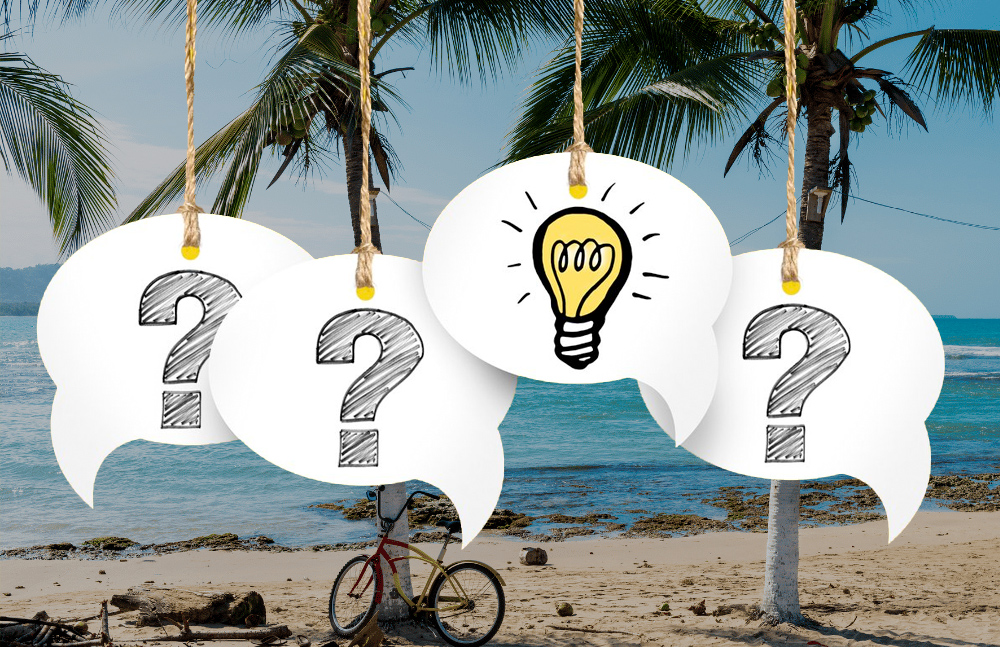Everything You Always Wanted to Know About the Caribbean* (*But Were Afraid to Ask)

By Karl Kahler
Costa Rica’s south Caribbean is an anomaly in a time warp, a place where the wild things are, delightfully remote and unspoiled, yet also embracing the modern world at its own leisurely pace and with its own unique style.
There is no populated place in Costa Rica that is more biodiverse, wildlife-rich, packed with more plants, animals or birds. The human diversity is also unparalleled, featuring a mix of Latino, Afro-Caribbean and indigenous Costa Ricans that occurs nowhere else in the country. Even the tourists are different here, with far more Europeans and fewer Americans than you’d find on the Pacific coast.
The Caribbean’s sizable black population is descended from Jamaican and other Caribbean workers who came in the late 1800s to build the San José-Limón railroad and stayed to work on banana plantations. They brought with them their own languages (English and patois), music (calypso and eventually reggae) and foods (rice and beans with coconut milk, jerk chicken).
Today you can enjoy these and other Caribbean foods at a wide variety of restaurants in the area. Try the rondón, a soup with fish or shellfish, plantains, tubers and coconut milk — whatever the cook can “run down,” hence the name. Patí is another tasty treat, a pastry filled with meat, spices and chilis. You can top that off with pan bon (“good bread”), a sweet pastry made with coconut, dried fruit and spices.
What to do
Visitors have a string of gorgeous beaches to choose from — Cahuita, Negra, Puerto Viejo, Cocles, Chiquita, Punta Uva and Manzanillo. Not to be missed is Cahuita National Park, a long, narrow seaside reserve with a trail parallel to the beach. In the far south, the Gandoca-Manzanillo National Wildlife Refuge next to Panama is similar, a protected area with great hiking along the beach.
Experienced surfers can try their luck with Salsa Brava, a choppy wave just off the beach in Puerto Viejo, though the rocky bottom is not to be underestimated. Scuba diving, snorkeling, kayaking and fishing are all offered here as well. You can also take a boat to Panama’s Bocas del Toro, an archipelago full of Caribbean-style construction and beachfront resorts that offers great scuba diving. (Bocas was also a favorite of the late, great Jimmy Buffett.)
There are some beautiful waterfalls to visit between Hone Creek and Bribrí. You can also go on a chocolate tour, visit an indigenous village and see the animals at the Sloth Sanctuary or the Jaguar Rescue Center (sorry, no jaguars). Horseback riding, ziplining and ATV rentals are also available.
How’s the weather?
There’s a joke that there are two seasons in the Caribbean — the rainy season and the really rainy season. Unlike the Pacific side, the Caribbean does not have clearly defined rainy or dry seasons, although September, October and March are among its driest months. But here it pretty much rains whenever it wants to — which should not deter travelers, because the downpours are thrilling and refreshing, and they leave the forest bright green.
The Caribbean is generally a bit cooler than the Pacific because of trade winds that blow in from the Atlantic. But you can usually expect daytime temperatures in the 80s, with little variation year-round because of the country’s proximity to the Equator.
The main towns
Puerto Viejo is the tourism capital of the south Caribbean, full of hotels, restaurants, tour agencies, grocery stores and clothing shops. It has a full-service medical clinic, pharmacies, banks, a post office and a bus station. Puerto Viejo has only about a dozen streets, making it easy to get around on foot or with a bicycle. Paved roads run right next to a smallish but popular beach lined with restaurants and bars.
Cahuita, 20 minutes to the north, is a charming, laid-back town with a typically Caribbean look and feel. It’s the gateway to Cahuita National Park, the region’s prime natural attraction.
Hone Creek, 10 minutes west of Puerto Viejo, has no beach but does have the area’s only gas station, in addition to big grocery stores, hardware stores, mechanics, churches and schools. It’s mostly inhabited by locals but can be a good place to pick up stuff you need.
Playa Cocles, 5-10 minutes east of Puerto Viejo, is a long, beautiful beach right in front of the coastal highway, making it easy to pull off the road, park a car and step onto the sand. The same highway is lined with hotels, restaurants, bars and stores. Just to the east of Cocles are Playa Chiquita, which is not as chiquita as you might think, and Punta Uva, which is arguably the most beautiful beach in the region.
Manzanillo, 20 minutes east of Puerto Viejo, is the end of the road. Here the highway ends at Gandoca-Manzanillo National Wildlife Refuge in a quaint, slow-paced town with another gorgeous beach.
But please don’t take our word for it — come and see the Caribbean for yourself. Just beware of these seductive shores, because many people come here and never leave.




